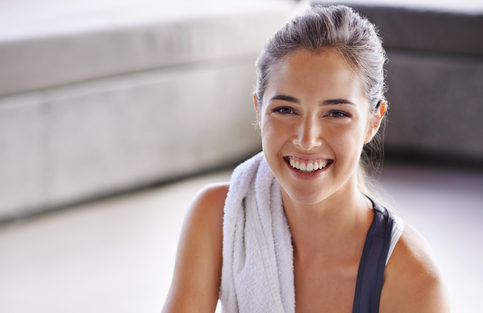Even though Pilates is the new kid on the block in comparison to yoga, it is here to stay. As much as it is trendy, it is not a fad and is something that people can benefit from for their whole lives. Pilates is an intricate discipline but ultimately it is a mind-body movement practice. Its main principles are alignment, breath, core stability, control, balance, mobility and coordination.
Joe Pilates created the method in the 1920s, rehabilitating soldiers returning from the war. He went on to work mainly with ballet dancers but was inspired by a range of activities including gymnastics, yoga and boxing. Joe once said: “The first requisite of happiness is a healthy body.” Freedom of movement really does equal happiness and from a holistic point of view ideally we want to be moving in a way that is kind to our bodies, functional and free of pain – Pilates allows us to move as efficiently as possible, it connects your mind, body and spirit and most people end a class feeling lighter, taller and calmer.
Pilates pointers
Understand the basics to approach your first class with confidence
What are the benefits?
There are endless benefits to practising Pilates – it works your deep intrinsic muscles like no other form of exercise, supporting your joints and spine to create a strong body that is less prone to injury. Regular practice leads to an improved range of movement, increased flexibility, better balance and co-ordination and a toned physique. Pilates is great for increasing your body awareness and proprioception, it creates a calmer mind, improved posture and the ability to use the full facility of your breath as well as keeping you mobile and strong as you age.
What can I expect from a class?
A balanced class will take you through a range of different exercises where your spine will move into flexion, extension, rotation and lateral flexion (side bending) and you’ll also do a range of exercises starting from laying on your back, side, front, seated, standing and kneeling. You may also use some props like balls, bands, Pilates rings, hand weights and rollers to challenge your mat practice even more. Do not expect to be jumping up and down or even feeling the ‘burn’ in every class. Relax and make it your priority to simply educate yourself on your body and the practice of Pilates.
Are there different types?
There aren’t different types of Pilates in the way there are different types of yoga, however there are many approaches and also pieces of equipment. Here are some you might come across:
Mat: In a mat Pilates class it’s usually just you and your mat, but you may also use some other pieces of small equipment. You might be focusing on abdominal work, glute work, balance, upper body strength, unilateral work, spine mobility, extending your spine or a bit of everything.
Classical mat: Classical mat Pilates is a series of exercises developed by Joseph Pilates which have a set pattern. A traditional mat session is very challenging and you’ll unlikely do a class which follows the exact flow from start to finish but a lot of teachers will include a selection of the exercises into the class.
Reformer: The reformer is made up of a horizontal moving bed attached to springs of different strengths, a stable platform, and a moveable foot bar and straps which you’ll use with your hands and feet in to do a range of exercises. The resistance challenges your stability and strength and encourages a greater range of movement.
Take five
Lottie’s top tips for good practice
1. Start strong
To get the most from every exercise make sure you take the time to set up properly. The start position is vital to doing the exercise correctly. Make sure you are properly aligned, using your breath and tummy and focused on what you need to do before starting each new exercise. Try to leave any worries, expectations of yourself and excess tension at the door and off your mat.
2. Be patient
Results from Pilates come when you work consistently not overnight. I recommend at least one hour dedicated to Pilates a week.
3. Be present
Try to be fully present and focus on what you’re aiming to get from each exercise, whether it is engaging a particular muscle or making your spine longer. The mind is very powerful.
4. Slow down
Pilates is controlled flowing movement and isn’t supposed to be rushed. Fast doesn’t mean harder work, sometimes the slower you go the harder it is. The Pilates method was originally named contrology (the study of control).
5. Find the right teacher for you!
There are lots of different styles and approaches to Pilates and even your instructor’s voice can make a difference. You need to look forward to your class and be able to connect to your teacher. Feel comfortable with them for hands on corrections and be able to ask questions and voice any concerns you may have. Try different classes, studios and teachers to figure out what you love.
Get started at home
Try these gentle exercises to start to learn the basics
Breathing
– in Pilates we breathe laterally to encourage relaxation, stability and to assist movement. Start by laying on your back with your knees bent and your feet hip width apart. Place your hands on the side of your lower ribs and feel long in your spine. Start to notice how you are breathing naturally. As you inhale the breath to fill up your hands, direct the breath into your ribcage filling up the back and sides. As you exhale feel the ribs narrowing and the chest softening. Avoid moving your shoulders and chest up and down and use the full capacity of your breath. Continue five to 10 rounds of breath like this.
Centering and pillow squeeze
– this exercise helps you learn how to correctly engage your deep abdominals and stabilise your spine. Lay in the same start position as above, on your back, and place a small cushion between your knees. Prepare your body by taking an inhale and as you exhale gently squeeze the pillow and feel your navel draw towards your spine. You should also feel a sense of lifting up your pelvic floor, as if you needed to stop yourself peeing. Inhale to release, exhale to squeeze. Repeat up to 10 times.
Pelvic compass
– we are now going to find your neutral pelvis. Neutral is the name for the position of your pelvis, spine and joints when it is correctly positioned and aligned to avoid any imbalances and excess tension. Imagine a compass face on your lower abdominals, north being where your belly button is and south being where your pubic bone is. Now breathe laterally and tilt your pelvis towards the north and then gently tilt the pelvis towards the south. The neutral alignment is between the north and south where the hip bones, pubic bone and belly button are all level and you may have a small natural arch in your lower back. Practise this gently rocking motion of the pelvis up to 10 times and then find your neutral.
Knee folds
– this exercise tests your pelvic and spine stability and that neutral pelvis we found in the exercise above. It is fundamental for many exercises in Pilates and one you may need to practise a lot. Once you have worked through the first three moves, inhale to prepare the body. As you exhale, fold the right knee towards you, moving from the hip joint, and inhale to place the foot back down. Repeat on the other side. It’s like a marching motion of your legs, but the key thing here is to keep the pelvis and spine neutral. Avoid any rocking of the pelvis and try to maintain a connect to your deep centring muscles throughout. Repeat three times on each leg.






















